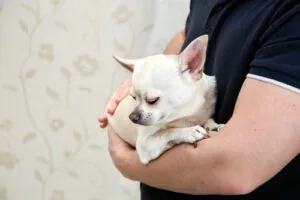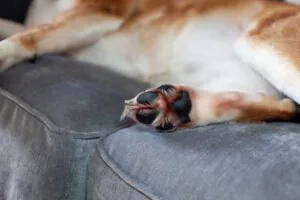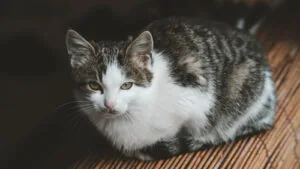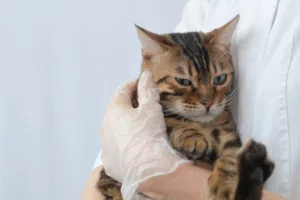Why Is My Cat Vomiting
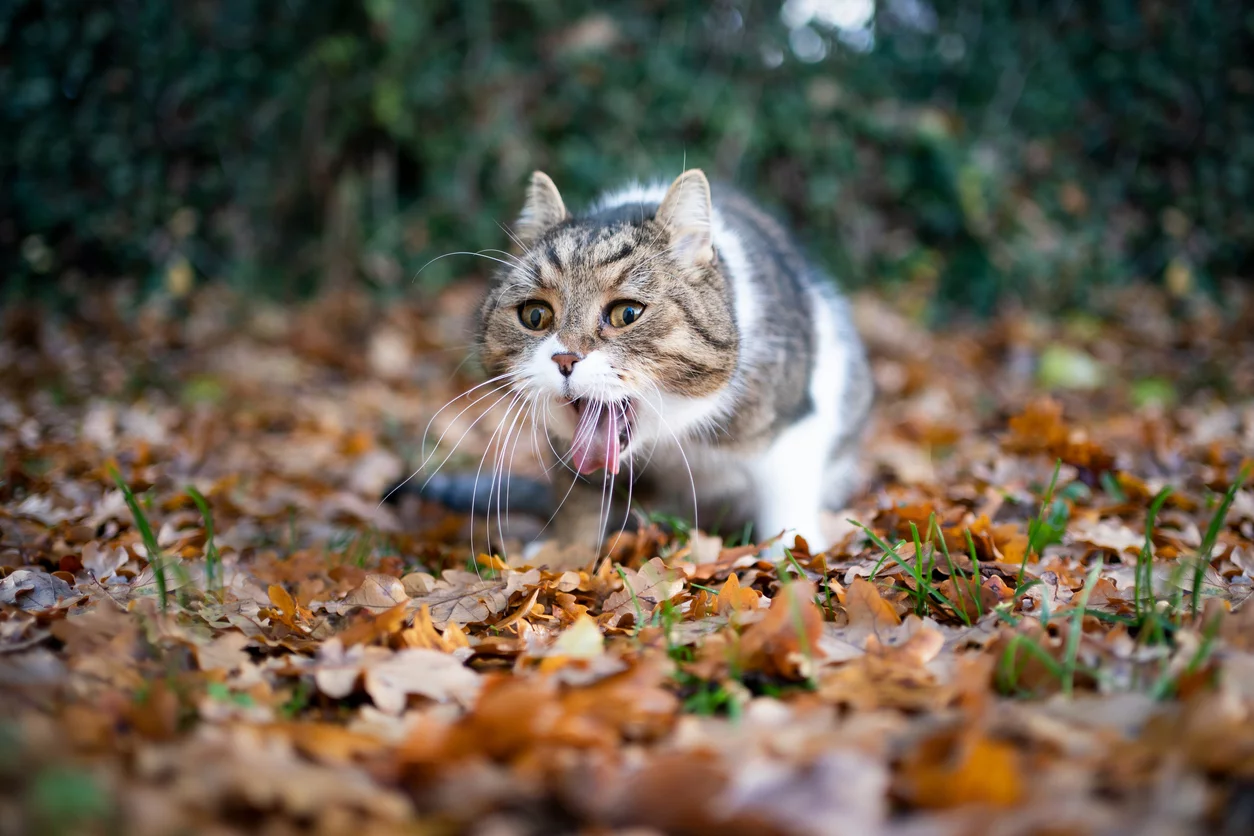
Why Is My Cat Vomiting in Dyer, IN
Every cat owner knows the sound of a cat preparing to vomit. And most likely you’re hoping your cat isn’t going to throw up on your furniture or the carpet. No one enjoys cleaning this type of mess up. But if your cat is vomiting often, you need to take note, because cats shouldn’t vomit frequently.
Once in a while isn’t something to be concerned about. After all, every cat does it on occasion. But if it’s happening more often, you’ll want to get to the bottom of why your cat is vomiting. While there are very common reasons cats vomit, there are also some serious issues that could be effecting your cat.
If your cat is vomiting more than normal, you don’t want to ignore it. Your cat should be seen by a veterinarian to get to the source of the problem. It’s worth erring on the side of caution when you understand some of the things that could cause your cat to vomit more than normal. In order to know when concern is warranted, you need to know what is normal and what isn’t. And when it’s vomit…and when it isn’t.
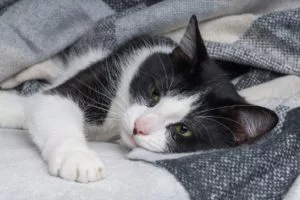
Vomiting VS Regurgitation
Vomiting and regurgitation are not the same thing.
It’s important to determine if your cat is vomiting or regurgitating as the causes and treatment are different. Regurgitation is a symptom of an esophageal disease.
Vomiting happens when your cat gags and wretches, often preceded by a plaintive meow. It is the active ejection of contents from the stomach and small intestines. Food will appear partially digested and can contain bile (yellowish fluid). On the other hand, regurgitation is when the cat effortlessly brings up food, liquid, or mucus from the esophagus. There is no nausea or abdominal contractions.
Regurgitation typically looks like undigested cat food, often in the form of a tube. It’s important to know that regurgitation and vomiting can look very similar. Regurgitation has two primary types: esophageal structural disorders and esophageal motility disorders.
Diagnostic tests are usually needed to determine the cause of regurgitation and the appropriate treatment for your cat. A thorough physical exam will be necessary as well.
Symptoms of Nausea In Cats
Common symptoms include:
- Lethargy
- Hiding
- Anxiety
- Decreased appetite
- Salivation
- Licking lips
- Repetitive swallowing
Vomiting VS Hairballs
Expelling a hairball can look similar to expelling vomit. Additionally, fluid and other stomach contents can come up with hairballs. This makes it difficult for some people to be able to tell the difference between a hairball and vomit. But the bulk of the material will be composed of hair. Hairballs form from self-grooming, especially in long-haired cats.
They take a form that is slender and tube-like and can be several inches long. If you’re still unable to tell if it’s a hairball or vomit, take note of the cat’s behavior. After expelling a hairball, cats should appear normal and symptom free. That doesn’t mean there can never be an issue with hairballs.
Hairballs should not appear difficult or painful to pass. Nor should your cat pass them frequently. It’s possible for hairballs to form intestinal blockages. You should keep track of your cat’s normal expulsion of hairballs and if needed, switch to a food formulated for hairballs. If your cat hasn’t expelled a hairball in a while, be on the alert for a loss of appetite, lethargy, and constipation.

Causes Of Cats Vomiting
There are two categories for causes of vomiting.
Gastrointestinal and non-gastrointestinal. Gastrointestinal are primary causes. Non-gastrointestinal are secondary causes. Primary causes directly affect the stomach and upper intestinal tract. Secondary causes are outside of the intestinal tract.
Gastrointestinal causes can include:
- (Change in food, food intolerance, eating too much.)
- Internal parasites. (Roundworms are the most common.)
- (Hairballs, toys, tumors, etc.)
- (Gastric/intestinal.)
- Inflammatory Bowel Disease. (Inflammation of the stomach and intestines.)
- Bacterial infections.
- Severe constipation.
- Stomach and intestinal ulcers.
- Ingesting chemicals or toxins.
- Eating non-digestible items. (Grass, plastic, string.)
Non-gastrointestinal causes can include:
- Cancer (Lymphoma, soft tissue sarcomas).
- Feline diabetes is similar to type II diabetes in humans.
- Liver disease.
- Heartworm disease.
- Urinary tract issues including kidney disease or a bladder rupture.
- (Inflammation of the pancreas.)
- Feline Infectious Peritonitis (FIP).
- Inner ear/neurologic diseases.
- Some prescribed medications.
- Viral infections.
What Does A Cat’s Vomit Look Like
You can get clues to your cat’s health by what the vomit looks like.
While inspecting your cat’s vomit isn’t pleasant, it’s helpful and important. It’s best to use a white paper towel to clean up your cat’s vomit. This way, you’ll see the true color.
- Bile – which appears yellow. If the stomach is empty, a cat will vomit bile. This can also happen if the cat is anorexic.
- Black – Black vomit should always be taken seriously. This is a result of digested blood in the gastrointestinal tract. It will often have an appearance like coffee-grounds. Call your veterinarian immediately if your cat’s vomit is black. There may be a serious complication with the digestive tract. Ignoring black vomit could be fatal for your cat.
- Blood – this might be seen for several reasons including: If your cat has vomited several times in a row. When this happens, acid can irritate the stomach lining and esophagus. Clotting abnormalities could be a possibility, which can stem from disease or toxins. Or from ulcerations. Blood in vomit should always be taken seriously. Untreated, bleeding in the gut could be life threatening.
- Brownish Liquid – can also be a sign of digested blood. This can occur from foreign objects, ulcerations, and even hairballs in the intestines. You should also consider the color of the cat’s food. It’s possible the dye in food caused the brownish coloring.
- Chunks – there is food in the vomit, indicating they have vomited before their meal had a chance to digest. It is also possible that the vomiting was triggered by the meal itself. It could also indicate an intestinal blockage.
- Foam – white in color. Can indicate the presence of inflammation in the stomach and/or intestines. However, foam can be present in any type of vomit.
- Food – Undigested food can be vomited after eating too much, too fast. Other causes could include an obstruction blocking the food, a food allergy, or from becoming nauseated shortly after eating.
- Foreign Objects – cats will eat many things they shouldn’t. Sometimes you will find these items in their vomit.
- Green – can indicate the contents were expelled from the small intestines. Green can indicate the presence of bile. Also, the cat may have eaten plant material.
When To Call Your Veterinarian
Call your vet when:
- Your cat vomits frequently.
- Your cat has been diagnosed with a serious condition. Vomiting could be a sign of disease progression.
- Your cat vomits a worm.
- Your cat is vomiting and has not taken in food or water in 12 hours.
- You find blood in your cat’s vomit.
- You cat is vomiting and has diarrhea.
- Any other symptoms besides vomiting develop.
Help Your Veterinarian Prepare
Have information ready for your veterinarian.
Be prepared for your veterinarian to have a battery of questions to help him diagnose your cat’s vomiting. Your veterinarian will ask about things such as:
- How frequently your cat vomits
- What your cat’s vomit looks like
- How long has the vomiting been going on
- Any dietary changes
- Are you feeding any treats
- Is your cat still eating and drinking
- Has your cat lost weight
- Does your cat have diarrhea
- Are there other cats in your home, are they vomiting as well
- Does your cat go outside
- Is your cat exhibiting signs of pain

Conclusion
It’s vitally important for the well-being of your cat for you to know what’s normal and what isn’t when it comes to vomiting. Especially if your cat is already suffering from a diagnosed disease. You need to know, and act, if an already compromised cat may be progressing in an illness. You may need to seek veterinary care right away.
Knowing the differences in what your cat is expelling from his body can give you the clues you’ll need to help your veterinarian do what is best for your cat. And equally important, when you know vomiting is normal, you won’t need to worry at all.
The more you know and understand about your cat’s health, the better you’ll be able to care for him and assure he’s happy and healthy. Giving your cat the healthiest life possible is the most important thing you can do for him. Understanding the difference between regurgitation and vomiting, and knowing when vomiting is normal or a serious concern, will let you know when action is needed. Or not.
Though cats will often try to hide illness, vomit can give important clues…when you know what you’re seeing. If you’re in doubt, err on the side of caution. It’s far better to make an unnecessary trip to your vet, than to ignore your cat’s symptoms and then learn your cat’s in serious trouble. We all want the best for our pets. And just knowing what to look for can put you ahead of the game.
Share This Post
Recent Posts
About Dyer Animal Clinic
We are a place where pets and their people can feel at home. It's a place where wellness is maintained and supported from the time they’re newborns through their golden years.


